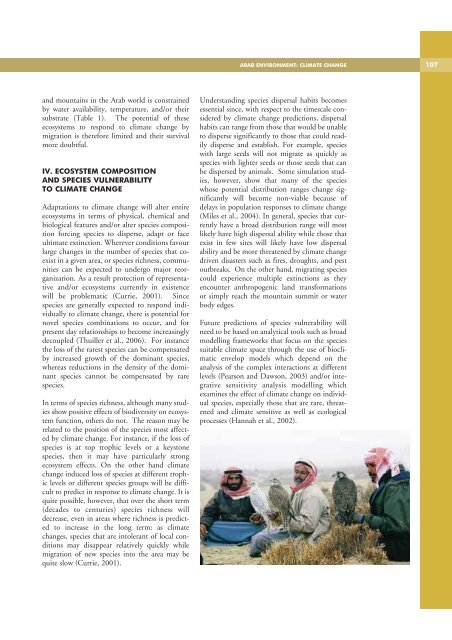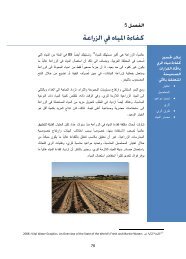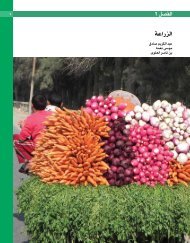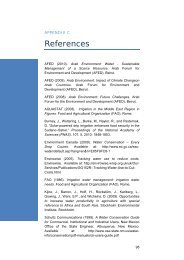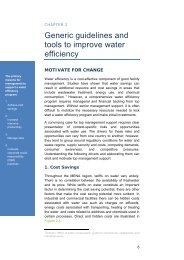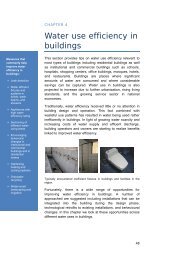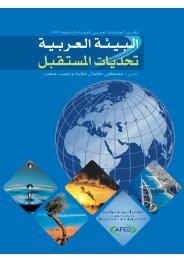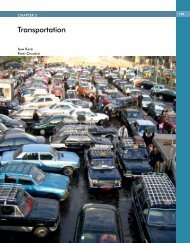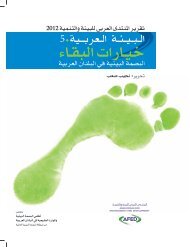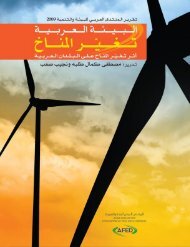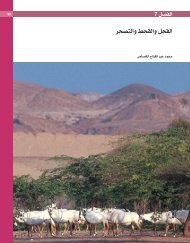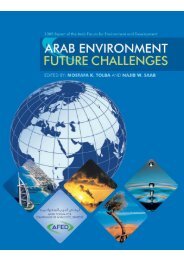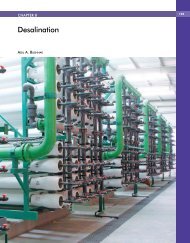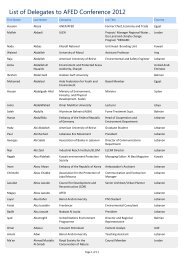Impact of Climate Change on Arab Countries - (IPCC) - Working ...
Impact of Climate Change on Arab Countries - (IPCC) - Working ...
Impact of Climate Change on Arab Countries - (IPCC) - Working ...
You also want an ePaper? Increase the reach of your titles
YUMPU automatically turns print PDFs into web optimized ePapers that Google loves.
ARAB ENVIRONMENT: CLIMATE CHANGE 107<br />
and mountains in the <strong>Arab</strong> world is c<strong>on</strong>strained<br />
by water availability, temperature, and/or their<br />
substrate (Table 1). The potential <str<strong>on</strong>g>of</str<strong>on</strong>g> these<br />
ecosystems to resp<strong>on</strong>d to climate change by<br />
migrati<strong>on</strong> is therefore limited and their survival<br />
more doubtful.<br />
IV. ECOSYSTEM COMPOSITION<br />
AND SPECIES VULNERABILITY<br />
TO CLIMATE CHANGE<br />
Adaptati<strong>on</strong>s to climate change will alter entire<br />
ecosystems in terms <str<strong>on</strong>g>of</str<strong>on</strong>g> physical, chemical and<br />
biological features and/or alter species compositi<strong>on</strong><br />
forcing species to disperse, adapt or face<br />
ultimate extincti<strong>on</strong>. Wherever c<strong>on</strong>diti<strong>on</strong>s favour<br />
large changes in the number <str<strong>on</strong>g>of</str<strong>on</strong>g> species that coexist<br />
in a given area, or species richness, communities<br />
can be expected to undergo major reorganizati<strong>on</strong>.<br />
As a result protecti<strong>on</strong> <str<strong>on</strong>g>of</str<strong>on</strong>g> representative<br />
and/or ecosystems currently in existence<br />
will be problematic (Currie, 2001). Since<br />
species are generally expected to resp<strong>on</strong>d individually<br />
to climate change, there is potential for<br />
novel species combinati<strong>on</strong>s to occur, and for<br />
present day relati<strong>on</strong>ships to become increasingly<br />
decoupled (Thuiller et al., 2006). For instance<br />
the loss <str<strong>on</strong>g>of</str<strong>on</strong>g> the rarest species can be compensated<br />
by increased growth <str<strong>on</strong>g>of</str<strong>on</strong>g> the dominant species,<br />
whereas reducti<strong>on</strong>s in the density <str<strong>on</strong>g>of</str<strong>on</strong>g> the dominant<br />
species cannot be compensated by rare<br />
species.<br />
In terms <str<strong>on</strong>g>of</str<strong>on</strong>g> species richness, although many studies<br />
show positive effects <str<strong>on</strong>g>of</str<strong>on</strong>g> biodiversity <strong>on</strong> ecosystem<br />
functi<strong>on</strong>, others do not. The reas<strong>on</strong> may be<br />
related to the positi<strong>on</strong> <str<strong>on</strong>g>of</str<strong>on</strong>g> the species most affected<br />
by climate change. For instance, if the loss <str<strong>on</strong>g>of</str<strong>on</strong>g><br />
species is at top trophic levels or a keyst<strong>on</strong>e<br />
species, then it may have particularly str<strong>on</strong>g<br />
ecosystem effects. On the other hand climate<br />
change induced loss <str<strong>on</strong>g>of</str<strong>on</strong>g> species at different trophic<br />
levels or different species groups will be difficult<br />
to predict in resp<strong>on</strong>se to climate change. It is<br />
quite possible, however, that over the short term<br />
(decades to centuries) species richness will<br />
decrease, even in areas where richness is predicted<br />
to increase in the l<strong>on</strong>g term: as climate<br />
changes, species that are intolerant <str<strong>on</strong>g>of</str<strong>on</strong>g> local c<strong>on</strong>diti<strong>on</strong>s<br />
may disappear relatively quickly while<br />
migrati<strong>on</strong> <str<strong>on</strong>g>of</str<strong>on</strong>g> new species into the area may be<br />
quite slow (Currie, 2001).<br />
Understanding species dispersal habits becomes<br />
essential since, with respect to the timescale c<strong>on</strong>sidered<br />
by climate change predicti<strong>on</strong>s, dispersal<br />
habits can range from those that would be unable<br />
to disperse significantly to those that could readily<br />
disperse and establish. For example, species<br />
with large seeds will not migrate as quickly as<br />
species with lighter seeds or those seeds that can<br />
be dispersed by animals. Some simulati<strong>on</strong> studies,<br />
however, show that many <str<strong>on</strong>g>of</str<strong>on</strong>g> the species<br />
whose potential distributi<strong>on</strong> ranges change significantly<br />
will become n<strong>on</strong>-viable because <str<strong>on</strong>g>of</str<strong>on</strong>g><br />
delays in populati<strong>on</strong> resp<strong>on</strong>ses to climate change<br />
(Miles et al., 2004). In general, species that currently<br />
have a broad distributi<strong>on</strong> range will most<br />
likely have high dispersal ability while those that<br />
exist in few sites will likely have low dispersal<br />
ability and be more threatened by climate change<br />
driven disasters such as fires, droughts, and pest<br />
outbreaks. On the other hand, migrating species<br />
could experience multiple extincti<strong>on</strong>s as they<br />
encounter anthropogenic land transformati<strong>on</strong>s<br />
or simply reach the mountain summit or water<br />
body edges.<br />
Future predicti<strong>on</strong>s <str<strong>on</strong>g>of</str<strong>on</strong>g> species vulnerability will<br />
need to be based <strong>on</strong> analytical tools such as broad<br />
modelling frameworks that focus <strong>on</strong> the species<br />
suitable climate space through the use <str<strong>on</strong>g>of</str<strong>on</strong>g> bioclimatic<br />
envelop models which depend <strong>on</strong> the<br />
analysis <str<strong>on</strong>g>of</str<strong>on</strong>g> the complex interacti<strong>on</strong>s at different<br />
levels (Pears<strong>on</strong> and Daws<strong>on</strong>, 2003) and/or integrative<br />
sensitivity analysis modelling which<br />
examines the effect <str<strong>on</strong>g>of</str<strong>on</strong>g> climate change <strong>on</strong> individual<br />
species, especially those that are rare, threatened<br />
and climate sensitive as well as ecological<br />
processes (Hannah et al., 2002).


